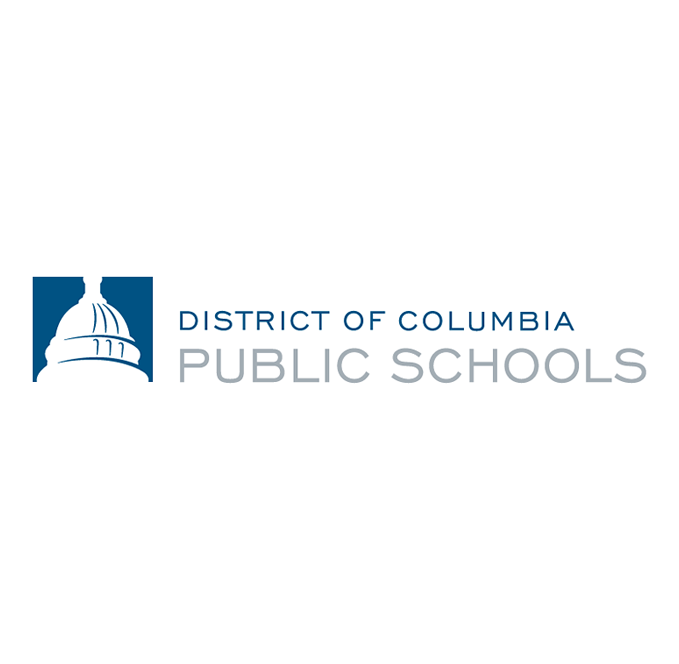Multidisciplinary leadership teams of counselors, social workers, and school security officers.
A partnership with SpaceX to bring broadband internet to a rural community.
Strategic planning that enhances life skills support structures.
These were just a few of the initiatives that leaders Dr. Mike Barton, Dr. Lewis Ferebee, Dr. Scott Muri, Dr. Eric Gallien, and Dr. Maria Vasquez shared at Panorama’s Thriving Schools Virtual Summit. This panel was moderated by Panorama’s Arlene Williams, former Assistant Superintendent of Curriculum and Instruction at Southwest ISD and Uvalde ISD. And it centered on a key topic: Guiding districts towards a future in which each student reaches their potential.
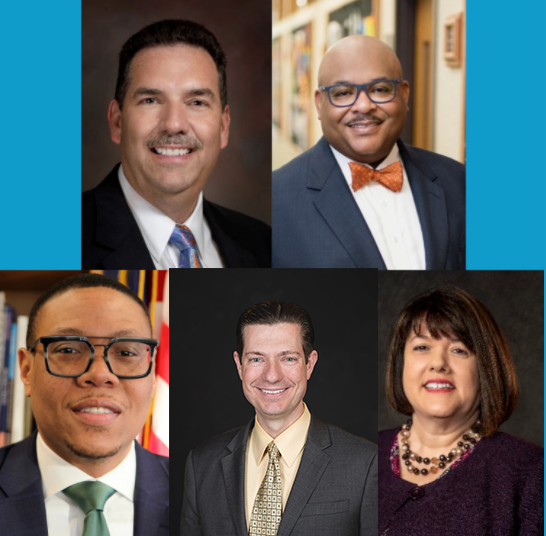 Panelists from top left to bottom right: Dr. Scott Muri, Dr. Eric Gallien, Dr. Lewis Ferebee, Dr. Mike Barton, Dr. Maria Vasquez
Panelists from top left to bottom right: Dr. Scott Muri, Dr. Eric Gallien, Dr. Lewis Ferebee, Dr. Mike Barton, Dr. Maria Vasquez
Many of the panel’s superintendents and their districts are members of Chiefs for Change, an organization that advocates for educational policies and practices that ensure every child in America receives a high-quality education. Chiefs for Change believes that every child must have:
- A safe and welcoming school
- Access to an excellent education
- Fully prepared teachers with the support they need to do their jobs well
- High-quality instruction materials
- Reliable and affordable pathways to college and meaningful careers
These values were front-and-center at the superintendent panel—and central to the Panorama community’s understanding of what makes a thriving school. Read on for key takeaways and highlights from the panel.
Key Takeaway #1: Every Student Deserves Access to Mental Health Support
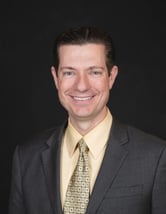 The power of community was a running thread of the superintendent panel. All of the panelists noted the importance of building community coalitions to center the needs of students, educators, and staff. Dr. Mike Barton, Chief College, Career, Equity, and School Choice Officer of Clark County School District in Nevada, shared his district’s journey toward creating a multidisciplinary team to support students’ mental health and well-being.
The power of community was a running thread of the superintendent panel. All of the panelists noted the importance of building community coalitions to center the needs of students, educators, and staff. Dr. Mike Barton, Chief College, Career, Equity, and School Choice Officer of Clark County School District in Nevada, shared his district’s journey toward creating a multidisciplinary team to support students’ mental health and well-being.
“It started for us in a dark place. During the 18 month period when the pandemic was occurring, we lost 25 students to suicide completion. With those numbers, it creates a sense of urgency that many of us probably recognize,” Dr. Barton said. “Mental health resources have been underfunded in Nevada, so we historically haven’t had the resources to tackle the very complex mental health issues of our students.”
In order to build systemic support for students’ mental health, Dr. Barton and the Clark County School District leveraged the entire community. They partnered with state mental health departments and local businesses to build support structures and examine data on why students were struggling during the pandemic. Then they used that data to develop a multidisciplinary support team to address students’ mental health challenges.
"We know we can't do this work alone, especially when it comes to something as vital as supporting the mental health of our students.”
— Dr. Mike Barton, Chief College, Career, Equity, and School Choice Officer of Clark County School District in Nevada
“At each of our 360 campuses, we established a multidisciplinary leadership team made up of counselors, social workers—and not just the mental health professionals, but also school MVPs,” Barton said. “We identified professionals—including campus security monitors and custodians—that were really good with children. It involved getting multiple partners to help us. We know we can't do this work alone, especially when it comes to something as vital as supporting the mental health of our students.”
Key Takeaway #2: Take a 360° Approach to Supporting Each Student
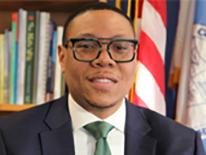 DC Public Schools’ Dr. Lewis Ferebee, a member of Chiefs for Change, joined the superintendent panel to discuss MTSS and trauma-informed schools. As the Chancellor of DC Public Schools, Dr. Ferebee brings over 20 years of experience to his position. He spoke about DCPS’s work to create a child-centered district where every child feels loved, challenged, and prepared, and where families are trusted partners in their children’s education journey.
DC Public Schools’ Dr. Lewis Ferebee, a member of Chiefs for Change, joined the superintendent panel to discuss MTSS and trauma-informed schools. As the Chancellor of DC Public Schools, Dr. Ferebee brings over 20 years of experience to his position. He spoke about DCPS’s work to create a child-centered district where every child feels loved, challenged, and prepared, and where families are trusted partners in their children’s education journey.
“To accomplish this and execute on our goals for equity and excellence, the multi-tiered system of support must be at the core of our work,” Dr. Ferebee said. “And so, through MTSS, our staff has been working collaboratively and taking a holistic approach. In our work, we center context about the students, and also about the family of each student.”
“Students need adults who will be champions for them. We need a holistic approach to ensure that our young people are prepared to take the next step in life as they fulfill their dreams and aspirations.”
—Dr. Lewis Ferebee, Chancellor of DC Public Schools
Dr. Ferebee shared examples of schools within DCPS that have implemented this holistic approach toward supporting students, including Hart Middle School. At this school, each student is paired with an adult champion. Adults support students holistically: Checking in on grades, building authentic relationships, and advocating for them in times of need. And they use data across academic performance, attendance, and relationships to determine the best supports for each student.
And he emphasized that students need much more than academic support at school to thrive. “I think the last year and a half has reminded us that, at the end of the day, our students need trusting relationships,” he said. “They need enriching experiences. And they need adults who will be champions for them. We need a holistic approach to ensure that our young people are prepared to take the next step in life as they fulfill their dreams and aspirations.”
Key Takeaway #3: When Communities Thrive, Students Thrive
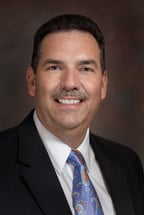 Dr. Scott Muri, Superintendent of Schools at Ector County ISD (TX) and a member of Chiefs for Change, echoed Dr. Ferebee’s message of providing holistic support to students and their families. For Dr. Muri’s district, this involved bringing broadband internet to the local community.
Dr. Scott Muri, Superintendent of Schools at Ector County ISD (TX) and a member of Chiefs for Change, echoed Dr. Ferebee’s message of providing holistic support to students and their families. For Dr. Muri’s district, this involved bringing broadband internet to the local community.
“Schools thrive when the students are thriving. And in March 2020, we quickly realized that a pretty large group of our students didn't have the ability to thrive. They couldn't connect to their teachers because they didn't have internet access in their home,” Dr. Muri said. “In fact 39% of our students either didn't have the internet, or they had such low quality internet that it was of no value to them. We had to jump in and figure out what to do.”
The district quickly realized the lack of broadband internet was impacting more than academic opportunities. It was also impacting the entire community. Families couldn’t access health care because telehealth wasn’t an option. Rural businesses lacked e-commerce opportunities. It was a community-wide issue—which the district turned into a community-wide opportunity.
“When we bring the collective together and create a common vision, then we become great as a community. And the ultimate beneficiary of that greatness are the students that we serve.”
—Dr. Scott Muri, Superintendent of Schools at Ector County ISD (TX)
The school district led the creation of a task force of city and county elected officials, city managers, county managers, hospital CEOs, and business leaders within the community—alongside leaders in PreK and K-12 schools, community colleges, and higher education institutions. And they partnered with SpaceX, who created a Starlink satellite solution for bringing high speed broadband to families. Today, all members of the community have access to high-speed internet.
Dr. Muri believes that the collective health of the village can—and should—be crucial to thriving schools. “Villages are our communities—not only parents, but also our businesses, our medical centers, our faith groups, and our non-profits. That's the village,” Dr. Muri said. “When we bring that collective together and create a common vision, then we become great as a community. And the ultimate beneficiary of that greatness are the students that we serve.”
Key Takeaway #4: Life Skills Go Hand-in-Hand with Academics
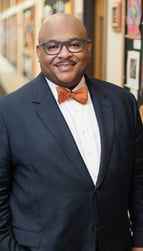 Dr. Eric Gallien, Superintendent of Racine Unified School District (WI), noted that his school district’s journey toward supporting the whole child started over a decade ago. “We began to look at life skills benchmarks as they related to career readiness and workplace skills, and used this information to create a thriving school community,” Dr. Gallien said.
Dr. Eric Gallien, Superintendent of Racine Unified School District (WI), noted that his school district’s journey toward supporting the whole child started over a decade ago. “We began to look at life skills benchmarks as they related to career readiness and workplace skills, and used this information to create a thriving school community,” Dr. Gallien said.
In order to support the whole child, Racine Unified worked to unify the often-disparate academic and behavioral sides of the house. “What we did, very intentionally, was marry the two sides. We came to understand that the development of a whole child involves all dynamics of their trajectory,” Dr. Gallien said. “There's not one element of development that's more important than the other. You can't possibly teach a child if you're not engaged in understanding their well-being.”
Dr. Gallien said that the district was fortunate to come across Panorama during this part of their journey. Panorama gave them the ability to measure student progress—academically and socially. And the district has continued to build on their support networks by creating opportunities for students and staff to engage in life skills development.
“There's not one element of development that's more important than the other. You can't possibly teach a child if you're not engaged in understanding their well-being.”
—Dr. Eric Gallien, Superintendent of Racine Unified School District (WI)
“We cannot approach life skills development in isolation. It goes hand in hand with the academic trajectory. In order to provide the best support, you have to do it holistically and look at the entire picture of student development,” he said. “And embrace alliances in your community. Begin to share what you're trying to accomplish. Don’t do this work in isolation; embrace community partnerships to move your district forward.”
Key Takeaway #5: Strategic Planning Must Include Comprehensive Support Structures
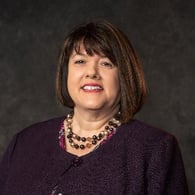 Dr. Maria Vasquez, Deputy Superintendent for Orange County Public Schools in Orlando, Florida, brought a comprehensive definition of thriving schools to the panel: “Building thriving schools means we're creating supportive, inclusive, and safe environments where students, teachers, staff, and parents have equal access to resources and professional learning opportunities for continuous improvement.”
Dr. Maria Vasquez, Deputy Superintendent for Orange County Public Schools in Orlando, Florida, brought a comprehensive definition of thriving schools to the panel: “Building thriving schools means we're creating supportive, inclusive, and safe environments where students, teachers, staff, and parents have equal access to resources and professional learning opportunities for continuous improvement.”
Dr. Vasquez’s district is using that definition to inform their approach toward supporting students. In collaboration with the school board, the district engaged in an extensive process of looking at data—both academic and life skills—and listening to the community. From this process, they developed a strategic plan that ensured students have holistic academic and life skills support.
“Building thriving schools means we're creating supportive, inclusive, and safe environments where students, teachers, staff, and parents have equal access to resources and professional learning opportunities for continuous improvement.”
—Dr. Maria Vasquez, Deputy Superintendent for Orange County Public Schools in Orlando, Florida
In practice, this looks like a comprehensive support system at each school. For example, each elementary school has a dedicated guidance counselor, each middle school has three or four, and each high school has four to eight. Additionally, every middle and high school has a dedicated social worker, and the district works to ensure educators and staff have access to professional development on life skills development.
Dr. Vasquez is passionate about rethinking our educational systems in light of the pandemic, and the change it has ushered in. “I believe that this is one of the greatest times to be leading a school district. We have an opportunity to rethink education. Our previous systems really did not provide for all of our children—but now we have this incredible opportunity to rethink how we do school, rethink resources, rethink time and space.”
“By collaborating with colleagues across the country and globally, we can make a significant difference in the lives of our children, our employees, and our entire community. We have to do this now to ensure our schools are thriving after the pandemic.”





